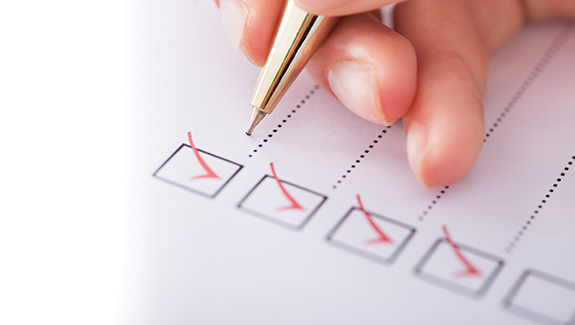Your 9-Point Hospital Discharge Checklist
Before making the trip from your hospital bed to your home, it’s important to review some essential care tips and precautions with your stoma care nurse.

Review this 9-point hospital discharge checklist.
Before you leave the hospital, there are a few things you will need to know. Use this 9-point checklist to review some basic ostomy skills and facts with your stoma care nurse for a smooth transition from hospital to home.
Empty your pouch: Exactly how you empty your pouch depends on the type you choose. For example, with a closed pouch, you simply remove and dispose of it. Whereas a drainable pouch requires you to drain it. Review guidance on ostomy pouching systems, or talk to your stoma care nurse about what’s right for you.
Changing your pouching system: It is best to change your pouching system when the stoma is least active. Often people find this is first thing in the morning. Once you get into a routine, you'll learn the rhythm of your body and be able to estimate the best time to change your pouching system.
Assess and care for your stoma and the skin around your stoma: Make sure your stoma care nurse reviews some important facts about your stoma, including how to assess its health. You should also talk about how to care for the skin around your stoma, which is called the peristomal skin.
Apply your pouching system: Your stoma care nurse will be sure to go over all the steps needed to re-apply your pouching system, including applying the skin barrier, verifying that it fits well, and making sure the adhesion is strong.
Assess the signs of potential complications and know when to contact a healthcare professional: Some issues may arise occasionally as you care for your ostomy at home. You’ll need to check for leaks, peristomal skin irritation, excessive stoma bleeding, and other potential complications that warrant contacting your stoma care nurse.
Manage gas and odor (colostomy or ileostomy only): As your bowel begins to function after surgery, you will notice gas in your pouch. Pouches with filters are available that help minimize gas and odor. Talk to your stoma care nurse about your options.
Follow dietary and fluid guidelines: You may gradually resume your usual diet unless your healthcare provider recommends otherwise. You can also review these eating do's and don'ts after ostomy surgery.
Follow instructions for home healthcare: You may be provided with home healthcare services on a temporary or permanent basis during your recovery. Your healthcare team will go over any special instructions with you.



